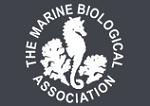APHOTOMARINE
An educational resource dedicated mainly to the photography
and diversity of marine life that can be found in coastal waters
and intertidal areas of Great Britain and Ireland.

Amblyosyllis formosa
- dorsal view 1
Syllid worm
Amblyosyllis formosa
- dorsal view 2
Syllid worm
Amblyosyllis formosa
- dorsal anterior 1
Specimen above was found on an extra low spring tide at Helford, Cornwall. 08.04.16.
Syllid worm
Amblyosyllis formosa
- dorsal view juvenile 1
Syllid worm
Amblyosyllis formosa
- dorsal view 3
Syllid worm
Amblyosyllis formosa
- dorsal view 4
Syllid worm
Amblyosyllis formosa
- dorsal view 5
Syllid worm
Amblyosyllis formosa
- dorsal view 6
Syllid worm
Amblyosyllis formosa
- dorsal view 7
Syllid worm
Amblyosyllis formosa
- dorsal view 8
Syllid worm
Amblyosyllis formosa
- dorsal view 9
Syllid worm
Amblyosyllis formosa
- rolled-up 1
Syllid worm
Amblyosyllis formosa
- ventral view 1
Syllid worm
Amblyosyllis formosa
- dorsal view 10
Syllid worm
Amblyosyllis formosa
- dorsal view 11
Syllid worm
Amblyosyllis formosa
- dorsal view 12
Syllid worm
Amblyosyllis formosa
- crawling over algae 1
Syllid worm
Amblyosyllis formosa
- crawling over sea squirt 1
Syllid worm
Amblyosyllis formosa
- crawling over sea squirt 2
Syllid worm
Amblyosyllis formosa
- ventral view head 1
Syllid worm
Amblyosyllis formosa
- ventral anterior head 1
Syllid worm
Amblyosyllis formosa
- trepan 1
Syllid worm
Amblyosyllis formosa
- chaetae 1
Specimens above found in samples taken from pontoons at Newlyn Marina, Newlyn, Cornwall. 03.12.14, 13.12.14 and 04.05.15.
Syllid worm
Amblyosyllis formosa
- posterior 1
Syllid worm
Amblyosyllis formosa
- swimming chaetae 1
Syllid worm
Amblyosyllis formosa
- alternating jointed and swimming chaetae 1
Above: Three specimens were seen swimming on the sea surface at Newlyn Marina, Newlyn, Cornwall, 01.09.17. On microscopic examination the specimens were found to have swimming chaete. The specimens likely represent a juvenile asexual dispersal stage of the species. The specimens initially had jointed chaete, but after the fourth pair each pair of jointed chaetae alternated with a pair of swimming chaetae.
APHOTOMARINE supports open source data recording and sharing for the benefit of wildlife, recorders, research, science and education. The project recommends the following websites and works with the following bodies and organisations.
The Marine Biological Association or MBA, based in Plymouth, is one of the world’s longest-running societies dedicated to promoting research into our oceans and the life they support. Since 1884 the MBA has been providing a unified, clear, independent voice on behalf of the marine biological community.It has a growing membership in over 40 countries.
The CISFBR or Cornwall and Isles of Scilly Federation of Biological Recorders is an independent umbrella organisation supporting independent recorders and recording groups in the county of Cornwall.
The Cornish Biodiversity Network
or CBN is the largest open source wildlife database in Cornwall that sends open source data to the NBN (National Biodiversity Network). It is a new recording system based on the ERICA database, the largest recording resource in Cornwall. The CBN best supports the activities and needs of the independent recording community and recording groups in Cornwall.
The National Biodiversity Network or NBN is a charity that supports open source data sharing and recording supporting conservation, science and education. "Why do recorders need open source?". Simply because it supports the core values of wildlife recording and the free use of records and data over a very wide network that includes partners like the Natural History Museum. The link here is to the NBN Atlas.The link here is to the NBN Atlas.
The taxonomy used here is based on that of the following database, which is also used by the MBA, NHM and the NBN.
The World Register of Marine Species or WoRMS.
Over 99% of the species records on APHOTOMARINE are open source but they are also copyright David Fenwick. Species records published on APHOTOMARINE may not be used on any database, list or distribution map, without a signed user agreement. Cornish records that appear on APHOTOMARINE are recorded using the ERICA database to benefit recording in Cornwall and scientific and historical recording in general. No financial benefit must be taken from any record produced by David Fenwick, records are of educational benefit only. Records by David Fenwick must ''never'' be financially traded.


